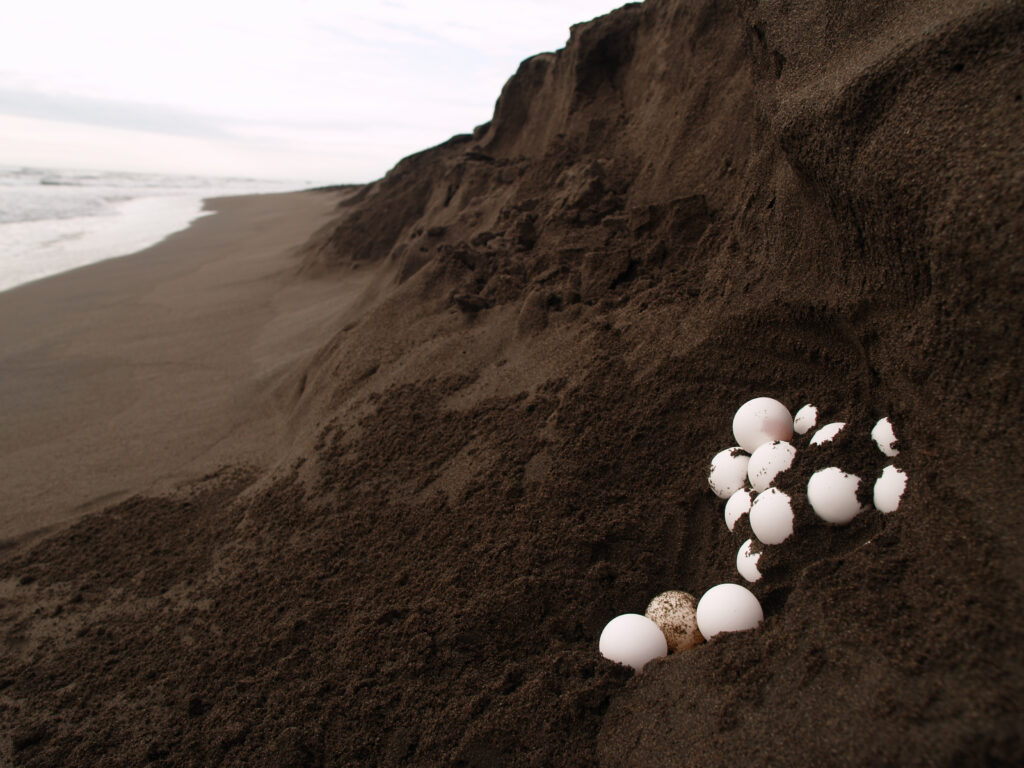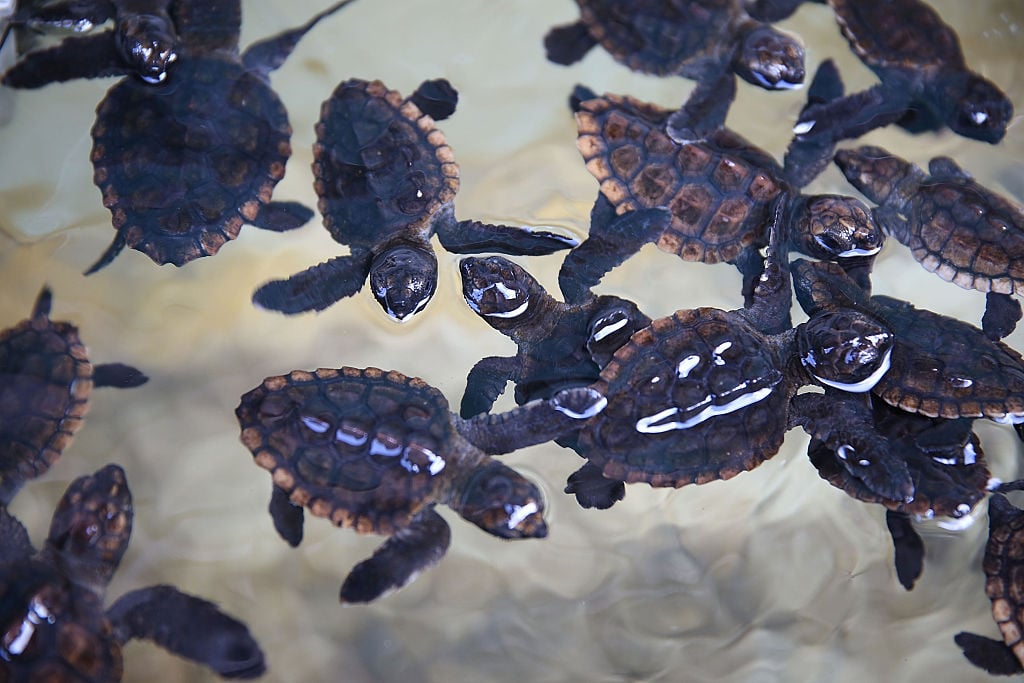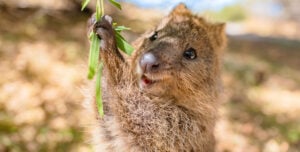Over the summer months, sea turtles crawl ashore in the southeastern US to lay their eggs on the same beach they themselves were once born. Humans have long tried to locate these nests to protect them from predators and environmental disruption, but have struggled to consistently track them.
Enter Dory, the real-life dog working for Disney with a masterful nose at smelling rare turtle nests.

Dubbed a “conservation sniffer” for her work with Disney’s Animals, Science, and Environment division, Dory learned to consistently and accurately locate these rare nests that have long troubled scientists. The success marked a remarkable turnaround for the mixed terrier who was still only two years old when she started conservation work, having been found on the side of a Florida highway as a puppy.
After being rescued, she was trained by Pepe Peruyero, a dog behaviorist and former police K9 handler with expertise in training scent-detection dogs. Dory was the poster dog for a project training canines on an artificial 50-by-50 square foot beach, where Peruyero taught Dory the scent of “cloacal mucus”. This sticky substance coats the freshly laid eggs of sea turtles.
In 2017 and 2018, during her first two peak nesting seasons on Vero Beach, Florida, Dory identified 560 different sea turtle nests from three different sea turtle species. Her handler for the study was Rebekah Lindborg, a conservationist with Disney’s Animals, Science, and Environment division. The pair had the most success pinpointing the nests of loggerhead turtles. Five different species of sea turtle crawl ashore each summer, yet 80% of Dory’s finds were loggerhead nests.
Interestingly, the largest sea turtle, the leatherback, remains the hardest for dogs and humans alike to find. The enormous creatures can grow up to 2,000 pounds, meaning the sand they disturb is much larger than other species of turtle.
Read More: The giant technicolor squirrels living in the forests of India
“We can spend hours trying to find them and not be successful at all,” Lindborg explains. All six of the leatherback nests found during the study fell on days Dory was working, but it is not a big enough sample size or enough comparative data to draw a clear conclusion in regard to Leatherbacks.
Elsewhere, though, the study conducted in 2017 and 2018 proved for the first time that canines could outperform humans in monitoring sea turtles. Dory was noticeably better at choosing where to dig for eggs, and was also harder to “stump” when locating nests – while human volunteers couldn’t find the eggs in 14.8 percent of nests, Dory only failed to deliver 5.7 percent of the time.

“We’re really excited about the impact it could have for the sea turtle community—and conservation work in general,” Lindborg says.
A large reason humans find it so hard to locate the nests is because of something called “false crawls”. These tracks in the sand are misleading, and come from female turtles clambering out of the water but returning without laying eggs. With the tracks not being reliable, smell is far more important when locating the nests, buried under huge amounts of sand to try to protect them from predators.
Dory has moved into a well-earned retirement nowadays, living a happy family life in Fort Lauderdale. Her impact, however, is only beginning, with Lindborg continuing to work with sea turtle-sniffing canines.





